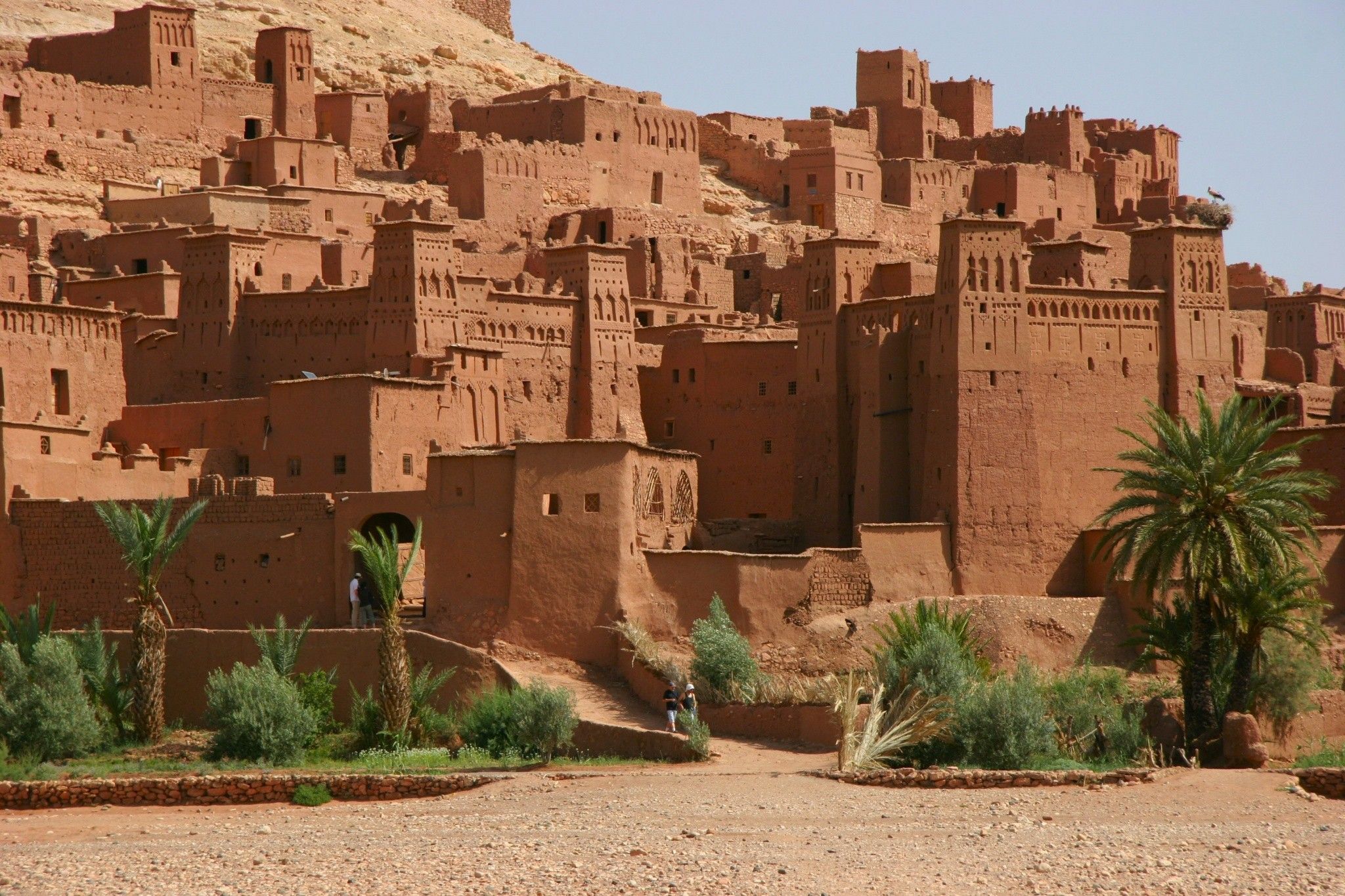Morocco, a land of vibrant culture, stunning landscapes, and rich history, is home to some of the most famous kasbahs in the world. These ancient fortresses, often perched on hilltops or nestled in valleys, are a testament to the country’s architectural prowess and historical significance. Among the many kasbahs that dot the Moroccan landscape, a few stand out for their beauty, cultural importance, and the stories they tell of a bygone era.
Kasbah Ait Benhaddou: A UNESCO World Heritage Site
Perhaps the most iconic of all Moroccan kasbahs is Ait Benhaddou, located along the former caravan route between the Sahara and Marrakesh. This UNESCO World Heritage site is a stunning example of traditional Moroccan earthen clay architecture. The kasbah has been used as a backdrop for numerous Hollywood films, including Gladiator, The Mummy, and Lawrence of Arabia, making it instantly recognizable to many.
Ait Benhaddou is a ksar, a fortified village made up of several smaller kasbahs, all connected by narrow alleys and surrounded by defensive walls. The kasbah is perched on a hilltop, offering breathtaking views of the surrounding desert landscape. Visitors can explore the labyrinthine streets, visit the ancient granaries, and marvel at the intricate designs that have stood the test of time. The kasbah’s historical significance and architectural beauty make it a must-visit for anyone traveling to Morocco.
Kasbah Taourirt: A Symbol of the Glaoui Dynasty
Located in the city of Ouarzazate, often referred to as the Gateway to the Sahara,Kasbah Taourirt is another prominent Moroccan kasbah. This fortress was once the residence of the powerful Glaoui family, who ruled over southern Morocco in the 19th and early 20th centuries. The kasbah’s strategic location made it an important stronghold in the region, controlling the trade routes between Marrakesh and the Sahara.
Kasbah Taourirt is a sprawling structure with over 300 rooms, a maze of passageways, and beautiful courtyards adorned with intricate stucco work and painted ceilings. The kasbah’s main tower, with its crenellated walls and decorative motifs, is particularly striking. Today, parts of the kasbah have been restored and are open to the public, offering a glimpse into the opulent lifestyle of the Glaoui family and the architectural splendor of the period.
Kasbah Amridil: A Living Museum of Berber Culture
Nestled in the Skoura Oasis, Kasbah Amridil is one of Morocco’s most well-preserved kasbahs and a living museum of Berber culture. Originally built in the 17th century, this kasbah is a fine example of traditional mudbrick construction, with its high walls, watchtowers, and beautiful inner courtyards. The kasbah has been passed down through generations of the same family, who continue to maintain it as both a home and a tourist attraction.
Visitors to Kasbah Amridil can explore its many rooms and passageways, learning about traditional Berber life and customs through displays of tools, household items, and agricultural equipment. The kasbah’s location in the lush Skoura Oasis, with its date palms and olive trees, adds to its charm and makes it a peaceful retreat from the arid desert surroundings.
Kasbah des Oudaias: A Historic Fortress in Rabat
In the heart of Morocco’s capital city, Rabat, lies the Kasbah des Oudaias, a historic fortress overlooking the Atlantic Ocean. Built in the 12th century by the Almohad dynasty, this kasbah is one of the oldest and most important in the country. The kasbah is characterized by its imposing walls, grand gates, and the Andalusian-style gardens within its walls.
The Kasbah des Oudaias is not only a historical site but also a vibrant neighborhood, with narrow streets lined with white-and-blue houses, a nod to the kasbah’s Andalusian influence. The kasbah’s location on a cliff offers panoramic views of the ocean and the neighboring city of Salé. Inside the kasbah, the Andalusian Gardens provide a tranquil escape with their fountains, citrus trees, and lush greenery. The kasbah’s museum, housed in a former palace, showcases traditional Moroccan arts and crafts, making it a cultural hub in the capital.
Kasbah Telouet: A Hidden Gem in the High Atlas Mountains
High in the Atlas Mountains lies Kasbah Telouet, a lesser-known but equally fascinating kasbah. Once the stronghold of the powerful El Glaoui clan, this kasbah played a crucial role in controlling the caravan trade routes through the mountains. The kasbah’s remote location and its relatively recent construction (in the early 20th century) have helped preserve its original splendor.
Kasbah Telouet is a blend of traditional Berber architecture and more modern influences, with its elaborate stucco work, painted ceilings, and zellij tilework. The kasbah’s main palace is a striking example of the opulence of the Glaoui family, with its richly decorated rooms and expansive courtyards. Despite its grandeur, the kasbah is less visited than others, making it a hidden gem for those willing to venture off the beaten path.
Morocco’s kasbahs are more than just historical monuments; they are living symbols of the country’s rich cultural heritage and architectural ingenuity. Each kasbah tells a unique story of the people who built and lived within its walls, from powerful dynasties to humble Berber communities. Whether you’re exploring the famous Ait Benhaddou or discovering the hidden treasures of Telouet, a journey through Morocco’s kasbahs is a journey through the heart of Moroccan history and culture.


